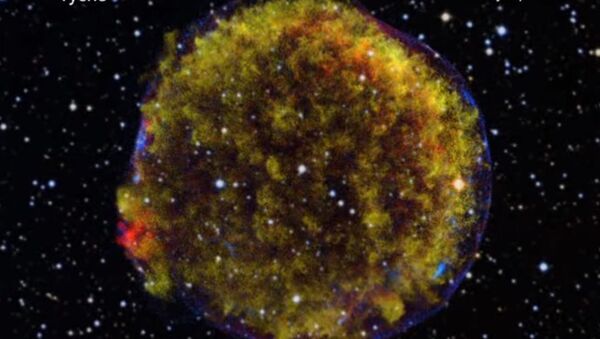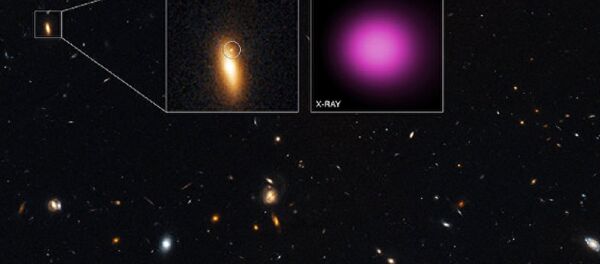The All Sky Automated Survey for SuperNovae (ASAS-SN) spotted the light some 3.8 billion light-years from Earth, which, at its peak, put out as much energy as 570 billion Suns. Such an incredible burst of energy typically signifies a superluminous supernova, and the light was correspondingly named ASAS-SN15lh. But ASAS-SN15lh did not fit the profile of a superluminous supernova according to study lead Giorgos Leloudas, astrophysicist with the Weizmann Institute of Science in Rehovot, Israel, and the Dark Cosmology Centre in Denmark. The event occurred in a red galaxy, which is filled with low-mass red stars unlikely to become supernovae, and instead of slowly cooling, as supernovae typically do, ASAS-SN15lh rapidly fluctuated in temperature.
Larger black holes are thought to be able to swallow entire stars. But the black hole in the center of ASAS-SN15lh’s galaxy spins rapidly, and when it came into contact with a low-mass star, it tore that star apart. As the star was pulled into the black hole the pieces collided, creating the huge surges of energy detected by the ASAS-SN instrument, according to astrophysicists.
This phenomenon is called a tidal disruption event, and only ten have been observed. Little is known of tidal disruptions, but none of the previously-observed events were near the level of energy released by ASAS-SN15lh. Leloudas cautions that it is not conclusively proven that the event was an example of a tidal disruption, but reports that the likelihood is the predominant theory.
Regular supernovae are spectacularly large explosions that signal the end of a star’s life. The events are believed to occur for a variety of reasons, but the most common is when a star’s core gains too much mass and collapses under its own weight. This typically occurs in very large stars and results in impressive telescopic images as the star emits cataclysmic amounts of energy.
Superluminous supernovae, or hypernovae, are more impressive, one hundred times as bright and one thousand times as rare as ordinary supernovae, according to Mathew Smith with the University of Southampton. Hypernovae are thought to be caused by the deaths of either exceptionally massive stars, or super-dense neutron stars with extremely powerful magnetic fields — called magnetars.
If ASAS-SN15lh is not a supernova, then the record for brightness will remain with iPTF13ajg, a superluminous supernova observed in 2014.





